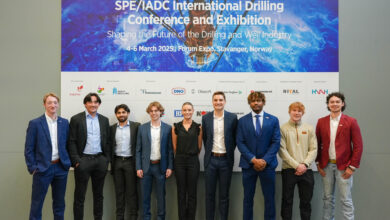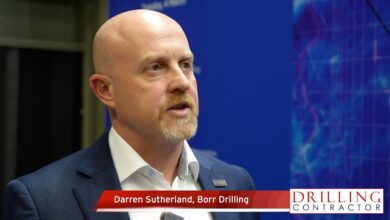Technical Session 8 – Rigs, Equipment, & Smart Technology
Editor’s note: These abstracts have been edited for space and clarity. This program is current as of 15 January 2013. Additions, withdrawals and other changes to the conference program after this date may not be reflected. Click here for the most updated program.
TECHNICAL SESSION 8: RIGS, EQUIPMENT AND SMART TECHNOLOGY
SPE/IADC 163509
Experience from Hardware-in-the-Loop Testing of Drilling Control Systems, T. Pedersen, Marine Cybernetics
Marine Cybernetics has finalized testing of drill floor control systems for seven rigs, involving nine different vendors. This paper presents experiences from these projects in terms of project execution, test timing and vendor cooperation and participation. Examples of typical observations are also presented.
SPE/IADC 163547
Microwave Heating: A Feasible Alternative for Drilled Cuttings Drying in Offshore Environments, A.L. Martins, C. Sa, C. Panisset, Petrobras; M. Pereira, C. Ataide, Federal U of Uberlandia; R. Naufel, ONDATEC
Offshore discharge of drilled cuttings contaminated by non-aqueous fluids is subject of strict environmental regulations. Limits vary from country to country and are certainly associated to water depths. In many cases, deepwater operation regulations tolerate some amount of organic phase in the cuttings, while shallow water regulations generally signalize to zero discharge. Cuttings collected by the shakers are conventionally processed by centrifugal driers installed at each drilling vessel. The low efficiency and safety issues related to this process motivated the industry to pursue alternate drying techniques. Several alternatives are currently under analysis and some of them, such as thermal desorption processes, are already a reality. This article deals with the feasibility of microwave technology to remove the organic phase of these drilled cuttings.
SPE/IADC 163561
Technological Innovation in Riser Tensioner Design Significantly Reduces Risk of Tensioner Overpull and Likelihood of Catastrophic Events, D. Trent, DTI LLC
Direct-acting riser tensioners are critical components in oil and gas drilling. What has become the accepted industry design standard for direct-acting tensioners, however, has inherent significant potential for overpull during normal operations. Overpull is directly linked to well head deformation and parting of the riser. Analysis of two assembly configurations proves that a solution exists to significantly diminish these risks.
E-POSTERS:
SPE/IADC 163517
The Next Step in Reciprocating Mud Pump Technology, D. Berryhill, S. Shelton, Weatherford Gemoco
Recent developments in reciprocating mud pump technology provide added value for operators, drilling contractors and measurement while drilling/logging while drilling (MWD/LWD) service providers. Utilizing current proven conventional triplex (three-cylinder) pump designs and adding two cylinders provides an increased performance envelope, reduces pulsations on the rig structure and piping, and substantially increases data rate-transfer bandwidth during MWD/LWD operations.
SPE/IADC 163555
Energy Storage for Electric Drilling Rigs, R. Thompson, K. Williams, J. Garaghty, KRW Technologies
This paper discusses the benefits from integrating large scale energy storage into gas powered electric drilling rigs. Benefits presented, which include fuel savings and emissions reductions, are based upon actual rig data with simulations of the proposed energy storage system. The energy storage technology is discussed as well as rig integration details.
SPE/IADC 163531
BOP Performance – Developments and Consequences in a Post-Macondo World, J.P. Sattler, WEST Engineering Services
The Macondo disaster and other recent environmental incidents have resulted in an emphasis on the performance and reliability of BOP equipment and systems, specifically in the US Gulf of Mexico, but also in other regions. With the increase in industry scrutiny and regulatory requirements, this new emphasis has led to many improvements.
This paper will describe the practical effects of these changes from an independent, third-party verifier’s perspective, including perceived benefits and identified but unintended consequences, together with some possible future unintended consequences.
SPE/IADC 163493
Dual Fuel and Dedicated Gas Engines Bring Cost and Environmental Benefits to the Oil and Gas Market, E. Henin, Caterpillar
A diesel engine fitted with an aftermarket add-on gas fuel system that provides a supplemental fuel source is generally called a dual-fuel system. Dual-fuel usage can lower fuel costs by as much as 70%, as compared to a standard diesel engine. While functional, these systems can create challenges for emissions and engine longevity.
In 2013, Caterpillar will offer dynamic gas blending, a comprehensive dual-fuel solution for land drilling and land production genset products. Caterpillar is also developing a solution for well fracturing applications.




